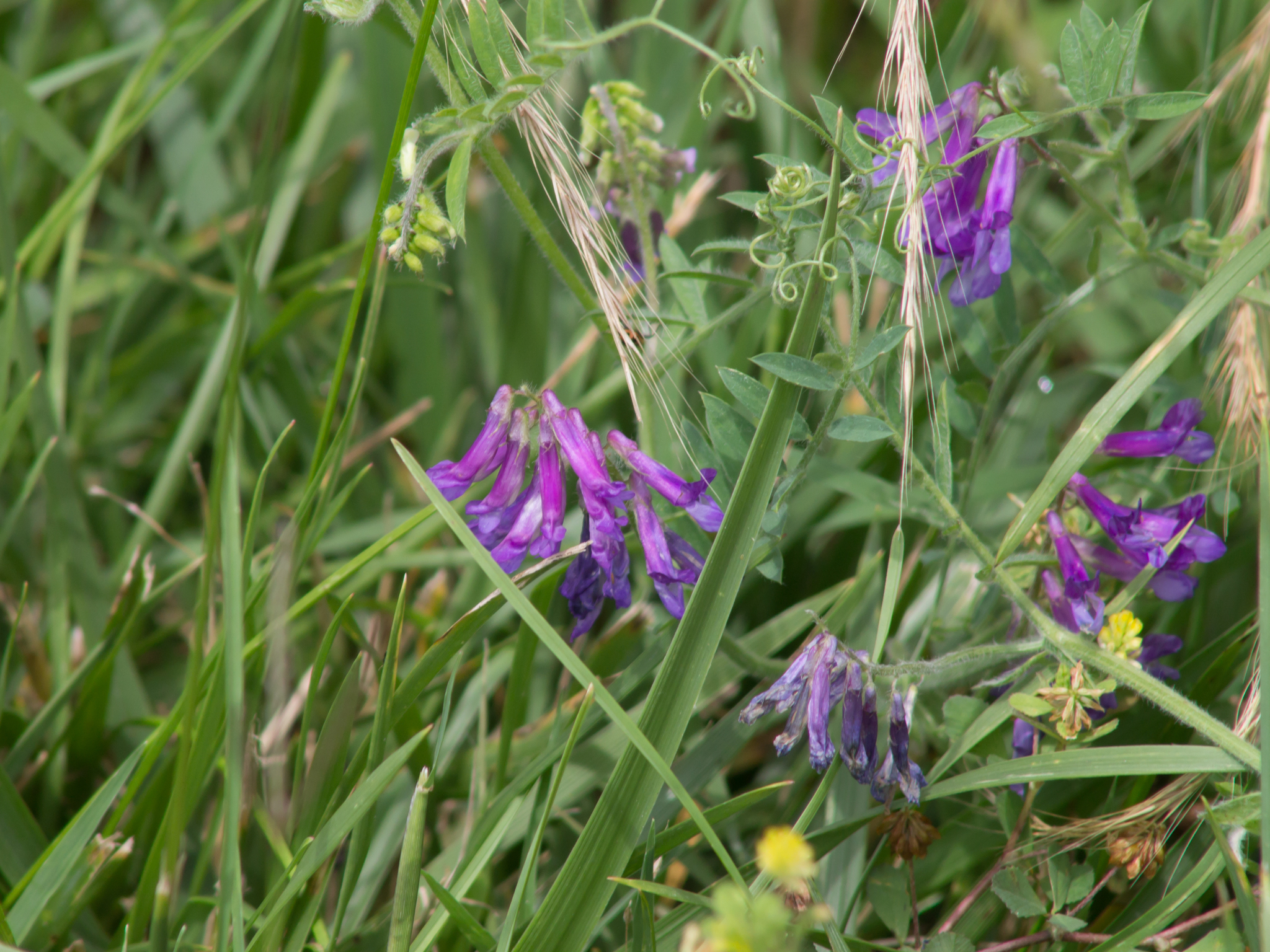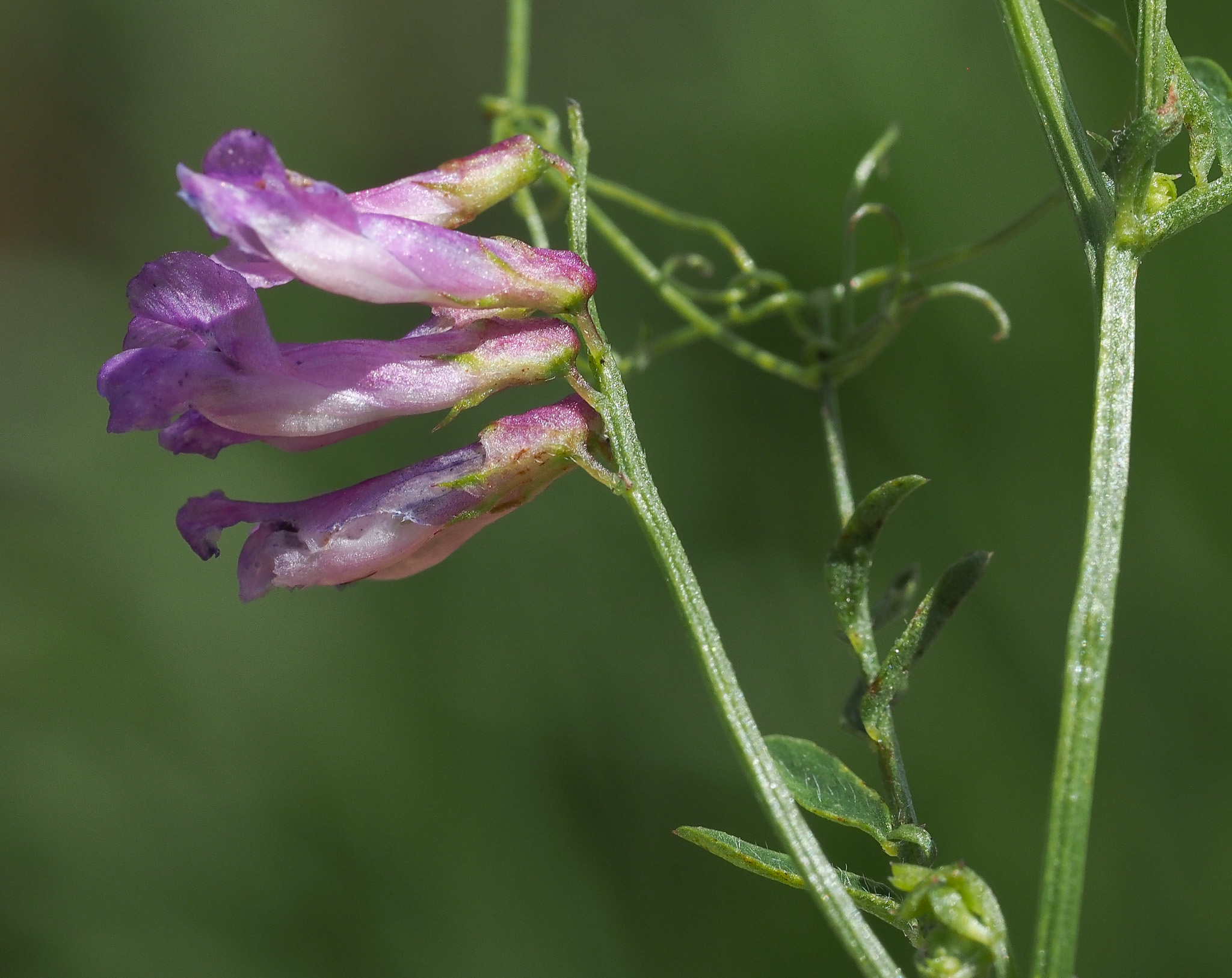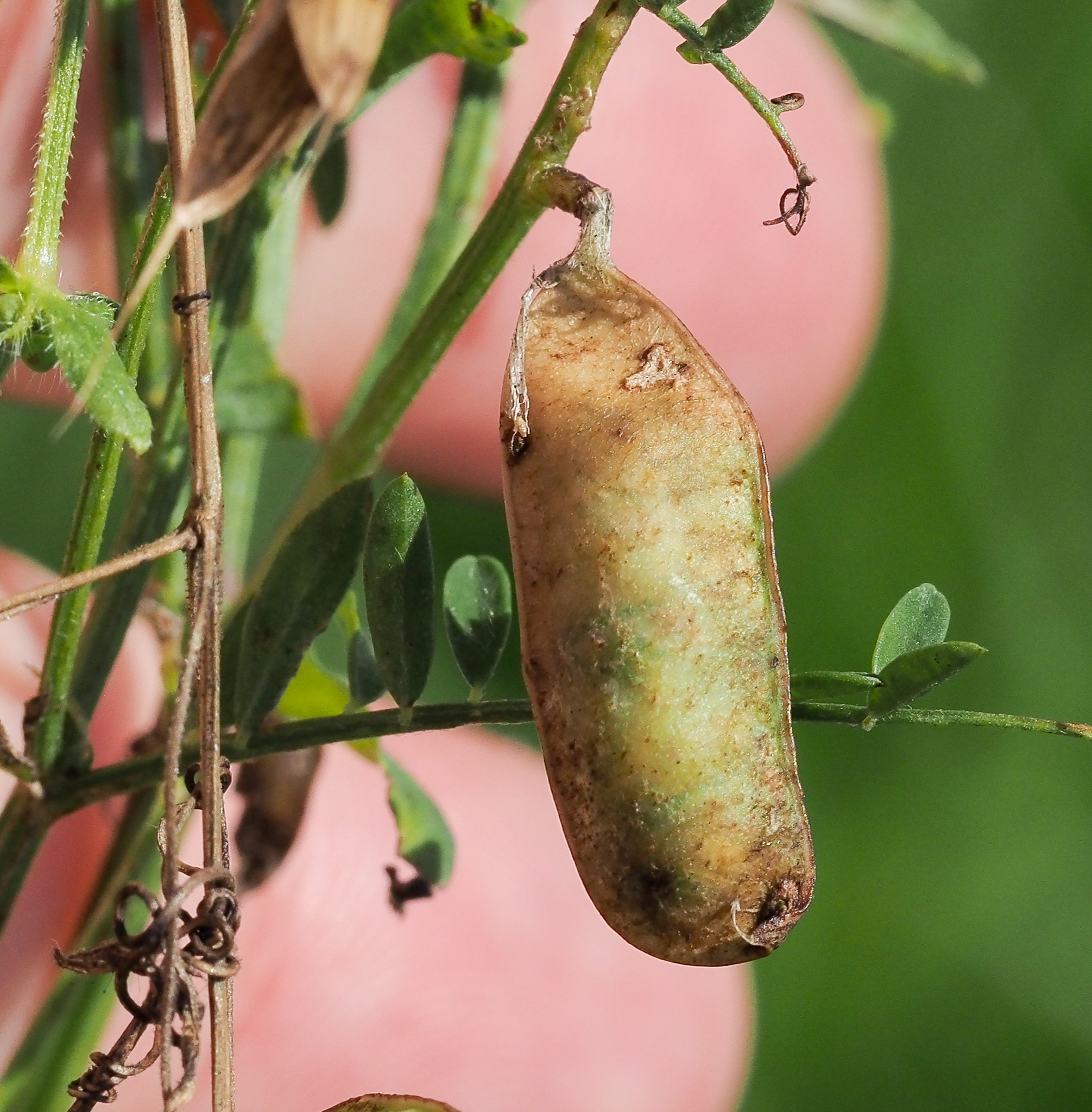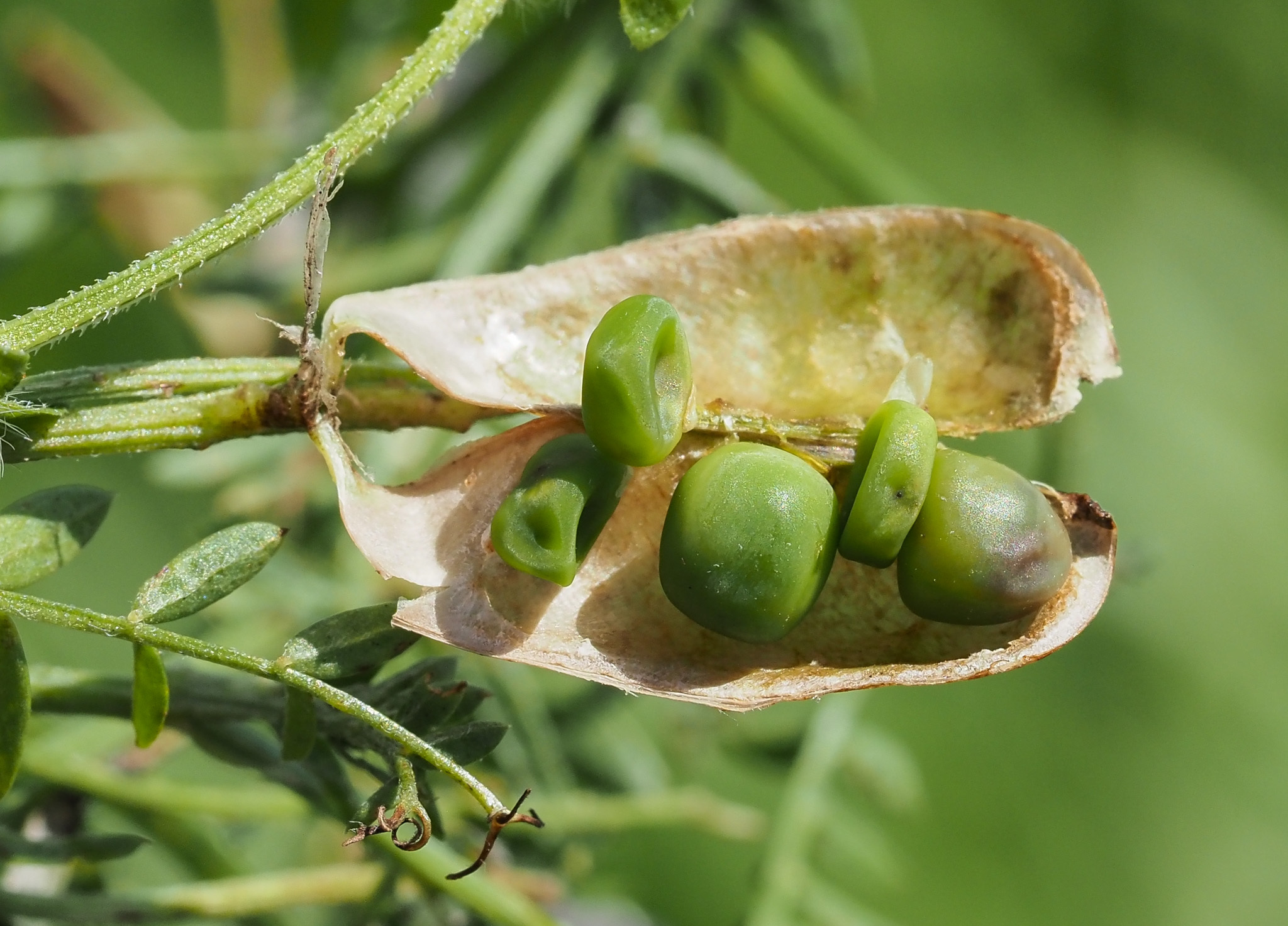Map Snapshot


















70 Records
Status
"Introduced and naturalized from Europe; cultivated as forage crop throughout eastern United States; Nova Scotia to British Columbia, south to Georgia, Texas and California" (Reed, 1964).
Description
Compare Bird Vetch.
Seasonality Snapshot
Source: Wikipedia
| Hairy vetch | |
|---|---|

| |
| Scientific classification | |
| Kingdom: | Plantae |
| Clade: | Tracheophytes |
| Clade: | Angiosperms |
| Clade: | Eudicots |
| Clade: | Rosids |
| Order: | Fabales |
| Family: | Fabaceae |
| Subfamily: | Faboideae |
| Genus: | Vicia |
| Species: | V. villosa
|
| Binomial name | |
| Vicia villosa | |
| Synonyms[1] | |
|
List
| |

Vicia villosa, known as the hairy vetch, fodder vetch or winter vetch, is a plant native to some of Europe and western Asia. It is a legume, grown as a forage crop, fodder crop, cover crop, and green manure. Although non-native, it occurs in all US states and is considered invasive by some states,[2][3] such as Alaska,[4] Florida, Georgia,[5][6] Kansas, Michigan, Minnesota,[7] Nebraska,[8] Oregon,[9] and Washington state — as well as in Japan[10] and some parts of Europe where it is not native. It is also found in most Canadian provinces.
Hairy vetch is very similar to tufted vetch (Vicia cracca), the most noticeable difference being that tufted vetch has a smooth stem.
Several subspecies are recognized:
- Vicia villosa ssp. ambigua (Guss.) Kerguelen (= ssp. elegantissima, ssp. pseudocracca)
- Vicia villosa ssp. eriocarpa (Hausskn.) P.W.Ball
- Vicia villosa ssp. microphylla (d'Urv.) P.W.Ball
- Vicia villosa ssp. varia (Host) Corb. (= ssp. dasycarpa)
- Vicia villosa ssp. villosa
The species Vicia hirsuta is also called hairy vetch.
Cultivation
[edit]Hairy vetch is widely used by organic growers in the United States as a winter cover crop and in no-till farming, as it is both winter hardy and can fix as much as 200 lb/acre of atmospheric nitrogen.[11] Disadvantages of hairy vetch in production agriculture are related to the crop having a portion of hard seed and its tendency to shatter seed early in the season, leading to it remaining in the field as a weed later in the season. This can be a particular problem in wheat production.
Companion plant
[edit]Organic gardeners often plant hairy vetch (a nitrogen-fixing legume) as a companion plant to tomatoes, as an alternative to rotating crops in small growing areas. When it is time to plant tomatoes in the spring, the hairy vetch is cut to the ground and the tomato seedlings are planted in holes dug through the matted residue and stubble. The vetch vegetation provides both nitrogen and an instant mulch that preserves moisture and keeps weeds from sprouting.[12]
Alien or invasive species
[edit]It is regulated in the state of Florida.[13] Some sources consider it generally invasive in areas with suitable climate for it to out-compete native species, in a manner similar to how cow vetch, Vicia cracca, is regarded.[14] With both vetches, their agricultural usefulness is typically given precedence over concerns regarding potential ecological degradation.[15] Despite being native to part of Europe it is considered an alien or invasive species in some European countries, such as Belgium, the Czech Republic, France, Germany, Italy, Poland, and Spain.[16][17]
See also
[edit]- Vicia spp. (vetch)
- List of companion plants
References
[edit]- ^ "Vicia villosa Roth". Plants of the World Online. Royal Botanic Gardens, Kew. Retrieved 31 August 2024.
- ^ "Weed of the Week — Hairy Vetch" (PDF). USDA Forest Service. Archived from the original (PDF) on 4 August 2016. Retrieved 10 September 2017.
- ^ "Vicia villosa Roth ssp. villosa distribution map". USDA Natural Resources Conservation Service. Retrieved 10 September 2017.
- ^ "Selected Invasive Plants of Alaska". USFS Alaska. Retrieved 10 September 2017.
- ^ "Midwest Invasive Plant Network Midwest Invasive Plant List". University of Georgia. Retrieved 10 September 2017.
- ^ "Invasive Plant Atlas of the United States — Vicia villosa". University of Georgia Center for Invasive Species and Ecosystem Health. Retrieved 10 September 2017.
- ^ "Vicia villosa — Hairy Vetch". MinnesotaWildflowers.info. Retrieved 10 September 2017.
- ^ "Hairy Vetch". Nebraska Invasive Species Program. Retrieved 10 September 2017.
- ^ "Invasive in Native Habitats of the Southern Willamette Valley". Emerald Chapter of the Native Plants Society of Oregon. Archived from the original on 18 March 2021. Retrieved 10 September 2017.
- ^ "Invasive Species of Japan". National Institute for Environmental Studies. Retrieved 10 September 2017.
- ^ Philpott, Tom (2013-09-09). "One Weird Trick to Fix Farms Forever". Mother Jones. Retrieved 2014-03-14.
- ^ Organic Gardening Magazine Archived April 12, 2008, at the Wayback Machine
- ^ "hairy vetch". Invasive.org Center for Invasive Species and Ecosystem Health. Retrieved 10 September 2017.
- ^ "Cow vetch and hairy vetch". Minnesota DNR Department of Natural Resources. Retrieved 10 September 2017.
- ^ "Invasive Species Compendium". CABI.org. Retrieved 10 September 2017.
- ^ "Manual of the Alien Plants of Belgium". Botanic Garden of Meise. Retrieved 10 September 2017.
- ^ Roy, David; et al. (2020). "Species Factsheet — Vicia villosa". European Commission DAISIE — Delivering Invasive Species Inventories Europe. doi:10.15468/ybwd3x. Retrieved 10 September 2017.



